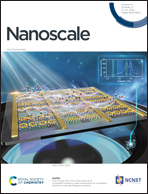Antibacterial metal-phenolic nanosheets as smart carriers for the controlled release of epirubicin hydrochloride†
Abstract
Bacterial infections can cause serious complications in cancer treatment and have been proven to weaken therapeutic benefits. Recently, antibacterial nanomaterials that serve as carriers for anticancer drug delivery have been attracting extensive interest due to their combined antimicrobial and anticancer activities. In this study, antibacterial metal-phenolic nanosheets (Cu–TA) were successfully prepared via the self-assembly of the metal-phenolic coordination complexes formed between copper ions and tannic acid, and the structure, morphology, and formation mechanism of Cu–TA nanosheets were explored. The antibacterial activity of Cu–TA nanosheets against both Gram-positive and Gram-negative bacteria was detected using the minimum inhibitory concentration (MIC), zone of inhibition and plate counting methods. The MIC values of both bacterial strains were about 0.4 mg mL−1, and the killing rates of Cu–TA samples were close to 100% at the concentration of 2 and 0.2 mg mL−1 after 12-hour incubation. Epirubicin hydrochloride (EPI) molecules were successfully loaded on the porous Cu–TA nanosheets mainly through the formation of the Cu–EPI chelate complex and strong electrostatic interactions. The Cu–EPI complex and Cu–TA nanosheets could be disassembled under acidic conditions or in the presence of high levels of glutathione (GSH) after uptake by cancer cells, which triggered the unique pH and GSH-responsive controlled release behaviors of EPI and copper ions. The MTT assay results revealed that the presence of bacteria in Hep G2 cells can greatly impair the cell death rate induced by free EPI, but the resultant EPI-loaded Cu–TA nanosheets can significantly enhance cell death both in the presence and absence of bacteria.



 Please wait while we load your content...
Please wait while we load your content...